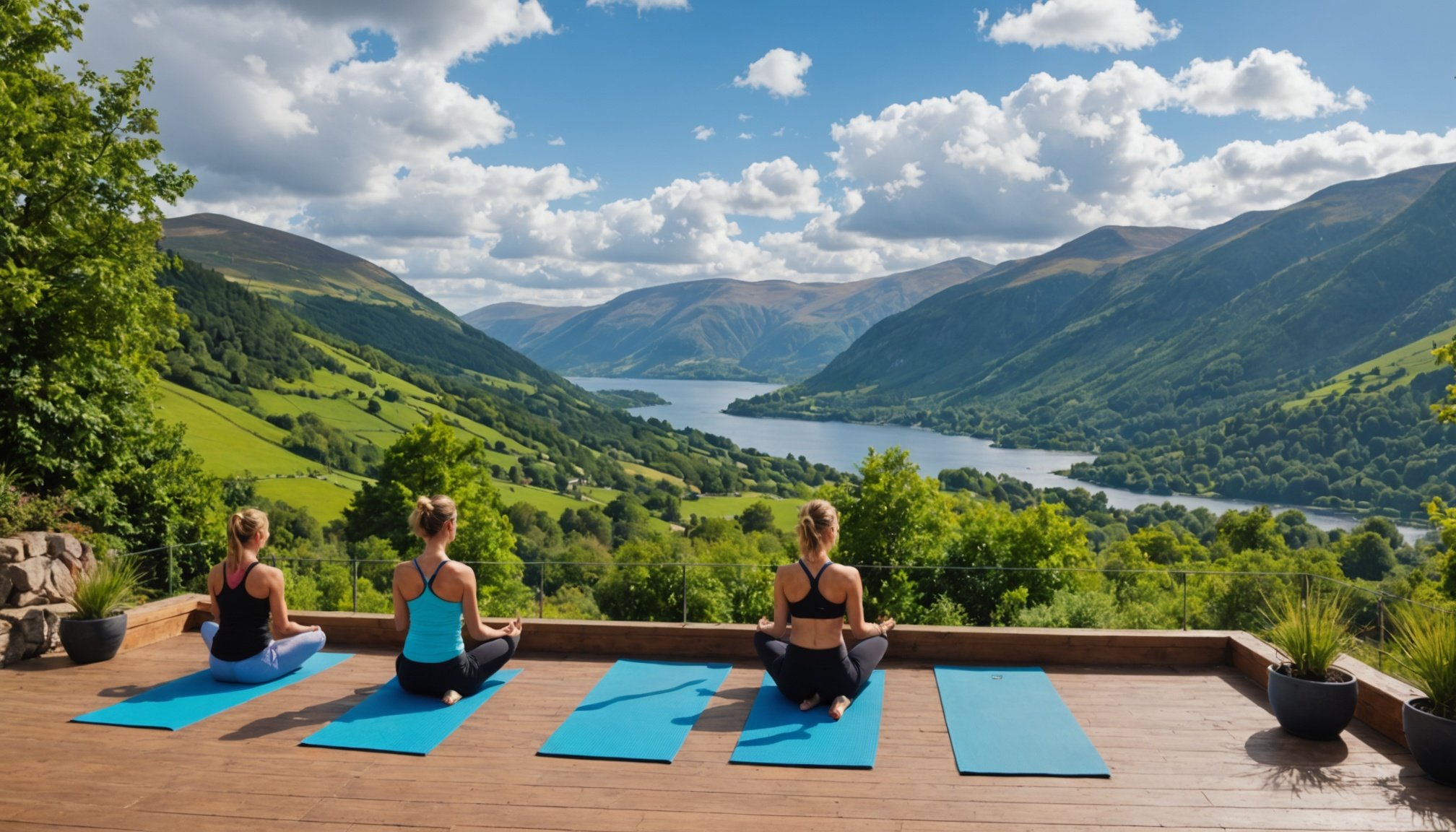Health and Safety Certification Essentials
Achieving health and safety certification is crucial for running a successful yoga retreat. Not only does it ensure legal compliance, but it also plays a significant role in enhancing client trust and well-being. The certification process begins with comprehensive training that covers essential aspects such as emergency procedures and health standards. Yoga instructors and retreat operators are required to possess relevant qualifications that demonstrate proficiency in these areas.
The training requirements include courses in first aid, risk assessment, and health and safety regulations specific to the UK. This training is designed to equip instructors with the skills necessary to handle emergencies effectively and maintain a safe environment for all attendees.
This might interest you : Ultimate blueprint for establishing a vibrant creative coworking hub in the uk
An understanding of health and safety standards helps organizers create an atmosphere conducive to relaxation and healing. Furthermore, maintaining up-to-date certifications is not merely a legal requirement but an ethical responsibility that underlines the integrity of your retreat.
To uphold these standards, routine inspection of facilities and regular drills for emergency situations are encouraged. Implementing these measures demonstrates your commitment to both the safety of participants and the overall success of your yoga retreat, allowing for a supportive and stress-free experience for everyone involved.
In the same genre : Mastering urban agriculture: a comprehensive blueprint for building a successful farming collective in the uk
Understanding the Legal Framework for Yoga Retreats in the UK
When organizing yoga retreats, legal requirements for yoga retreats in the UK are paramount. Starting with compliance ensures seamless operation and enhances the trust and safety experience for your clients. The UK imposes specific regulations to guide how retreats are managed. These include public liability insurance, risk assessment protocols, and adherence to health and safety regulations. These steps must be taken seriously to safeguard the integrity of the retreat and protect attendees.
Key regulations that yoga instructors and retreat operators should be aware of include licensing, taxation obligations, and data protection laws. For instance, maintaining up-to-date insurance coverage ensures financial protection against potential liability claims. Furthermore, facilitating background checks for all instructors enhances the retreat’s reliability and client trust.
Compliance with these UK regulations is not just bureaucratic but an avenue to instill confidence in your clients. A proactive approach to meeting these standards is vital for business integrity. Ignoring legal requirements can lead to sanctions, financial losses, and reputational damage. For business brands that put client safety first, adherence to legal frameworks aligns with their ethical commitment to participant care and satisfaction. This positions the retreat as a trusted and professionally-run destination.
Venue Selection and Preparation
Venue selection plays a crucial role in the success of your yoga retreat. Finding the right space is not just about aesthetics—ensuring the retreat space meets all retreat space requirements enhances both the safety and satisfaction of your attendees.
When considering a venue, prioritize locations that offer ample room for yoga sessions, dining, and relaxation areas. Evaluate the site’s amenities and safety features critically. Essential amenities could include comfortable accommodation, adequate facilities for yoga practice, and reliable transport links. A thorough examination of safety features like fire exits, security protocols, and first aid availability is imperative to safeguarding participants.
To ensure the venue aligns with health and safety compliance, detailed site preparations are essential. Begin by conducting a comprehensive risk assessment to identify potential hazards. This process involves checking for structural integrity, ensuring emergency procedures are in place, and verifying that all health standards are satisfied. If the venue lacks certain facilities, consider temporary adjustments or alternatives to meet attendee needs.
By selecting a venue that aligns well with your retreat’s ethos and guarantees safety and comfort, you set the stage for a nurturing environment that allows attendees to fully immerse themselves in the retreat experience.
Creating a Safe and Supportive Environment
Ensuring a supportive retreat environment is essential for promoting relaxation and healing. Establish strategies that safeguard both participant safety and adherence to wellness guidelines. Begin by formulating clear wellness guidelines that encompass inclusivity, dietary needs, and accessibility adjustments, promoting an environment where everyone feels welcome and valued.
To bolster safety, devise a robust emergency response plan. Regular drills and easy access to first aid resources ensure participant safety in unforeseen circumstances. Create a set of participant safety protocols to mitigate potential risks and provide assurances to attendees. Safety measures may include clear evacuation routes, staff trained in CPR, and on-site medical personnel availability.
Building a community culture involves encouraging open communication and mutual support amongst participants. Foster an inclusive environment through activities promoting collaboration and respect. Providing spaces for reflection and feedback also enhances the sense of community and commitment to a supportive atmosphere. Instilling a sense of belonging helps mitigate stress and enhances the overall retreat experience.
Focus on making the retreat enriching and supportive by prioritizing participant well-being. When adopting proactive safety and wellness strategies, retreats become nurturing havens that empower individuals to engage fully in the transformative practice of yoga.
Real-life Case Studies of Successful Yoga Retreats
Exploring successful yoga retreats provides invaluable insights into what makes a retreat flourish. Case studies highlight significant contributions to their triumphs, steering both organisers and attendees towards enriching experiences. One standout example is a retreat that emphasized location and environment, selecting a venue with retreat space requirements aligning with participant expectations. This attention to detail creates a harmonious blend of comfort and spirituality, fostering a deeply immersive experience.
Learning from both successes and setbacks is crucial. Lessons learned from past challenges reveal that ignoring legal and safety requirements can severely impact a retreat’s reputation. One retreat’s failure to comply with necessary UK regulations led to regulatory issues, underscoring the importance of thorough planning and adherence to standards for business success.
Adopting best practices plays a significant role in enhancing participant satisfaction. Offering a diverse itinerary, skilled instructors, and clear wellness guidelines supports a well-rounded and supportive retreat environment. Embracing sustainable practices additionally appeals to eco-conscious participants and ensures long-term success. Trust-building measures, such as transparency in planning and incorporating feedback, further cement your retreat’s reputation as a trusted wellness destination. Implementing such strategies ensures a memorable, transformative retreat experience for all involved.
Marketing Your Yoga Retreat
Effectively promoting yoga retreats demands strategic marketing strategies to capture the attention of potential participants. Begin by identifying robust marketing channels such as social media platforms, email campaigns, and wellness blogs. These platforms are invaluable in reaching a wide audience interested in wellness and yoga.
Creating a compelling retreat narrative is crucial. Highlight the unique value propositions your retreat offers, such as serene locations, expert instructors, or transformative experiences. A well-crafted story that resonates with your audience’s desires is instrumental in attracting participants.
Online platforms like Instagram and Facebook serve as powerful tools for engagement. Share visually appealing content—photos of past retreats, testimonials, or live Q&A sessions—to create buzz and encourage dialogue. Consistent and engaging content keeps your retreat top of mind for potential attendees.
Networking with yoga communities and collaborating with influencers or wellness experts can also amplify your reach. They can authentically convey your retreat’s benefits, fostering further interest and credibility.
By leveraging diverse marketing avenues and building a strong, relatable narrative, your retreat stands out, drawing participants eager to embark on a transformative journey. With these strategies in place, you’ll effectively communicate the essence and value of your yoga retreat.











